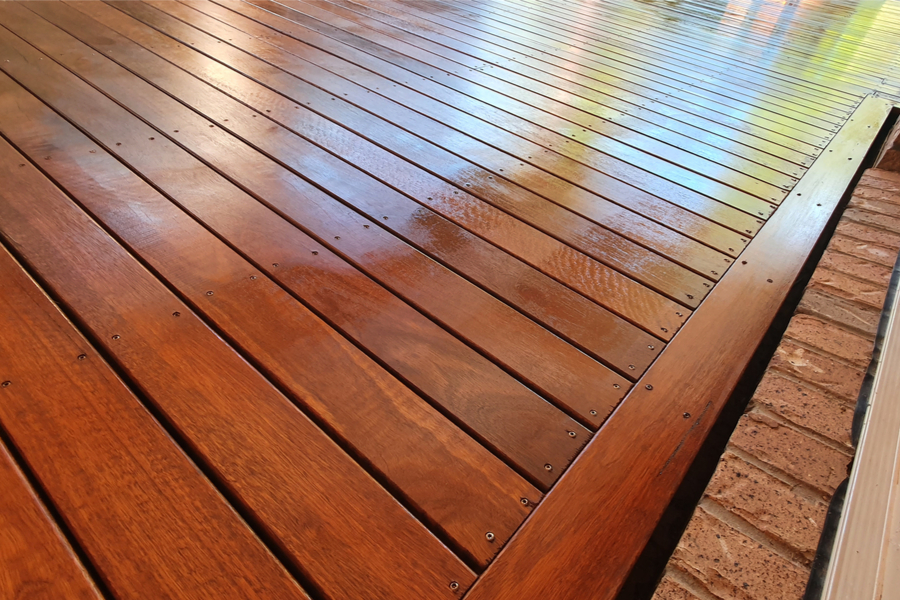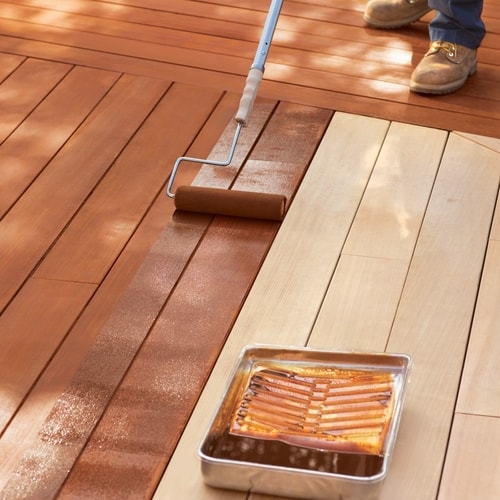Crafting Visual Borders: The Magic of Fence Staining
Picking the Right Stain for Your Fencing: Tips and Considerations
When it comes to preserving and enhancing the look of your fencing, choosing the appropriate discolor is essential. We will certainly discover the different kinds of fencing stains, factors to consider before choosing a tarnish, pointers for preparing your fence for staining, and the differences between water-based and oil-based spots. In addition, we will delve into picking the ideal stain color to match your fence and boost your exterior space.
Understanding Various Sorts Of Fence Stains

On the other hand, water-based stains are made from acrylic or latex and provide a more refined color to the timber. They produce a protective movie on the surface area of the wood, protecting against moisture from leaking in and protecting against UV damage. Water-based discolorations are much easier to cleanse up and have a much faster drying time compared to oil-based discolorations. They are also less most likely to fade or break in time.
Choosing in between water-based and oil-based stains depends upon various variables, consisting of individual choice, the preferred appearance, and the level of maintenance called for. Oil-based spots are advised for fence high-traffic locations or those constantly revealed to extreme weather problems. fence staining and sealing. Water-based discolorations, on the other hand, are a prominent selection for fencings in household locations where appearance and convenience of use are necessary
Understanding the distinctions between water-based and oil-based discolorations helps home owners make an informed choice when picking the best discolor for their fencing. Thinking about the specific needs of the fencing, such as its area, direct exposure to sunshine, and wanted visual, will certainly make sure that the picked discolor offers resilient defense and enhances the overall appeal of the fence.
Aspects to Think About Before Selecting a Spot

Different types of timber take in spots in different ways, resulting in differing degrees of shade intensity and durability. Additionally, certain timbers may be a lot more vulnerable to problems like rot or insect invasion, which might influence the choice of tarnish to protect the fencing and safeguard.
The climate and weather in your location should likewise be taken into account. If you stay in a location with severe winters months or high moisture, you may need a stain that provides added protection against moisture and UV rays. Likewise, if your fence is revealed to direct sunshine for extended periods, a tarnish with UV inhibitors can aid protect against fading and discoloration.
Finally, it is essential to consider your wanted aesthetic. Different discolorations offer various shades and finishes, allowing you to tailor the look of your fencing (deck staining). Think about the total design and design of your building, along with any type of local guidelines or house owner organization standards that may dictate the acceptable tarnish shades
Tips for Preparing Your Fencing for Discoloration
Cleaning the fencing is a crucial action as it gets rid of dust, grime, and any kind of previous coverings that might interfere with the discoloration process. Rub the surface carefully, paying additional attention to areas with stubborn discolorations or mold.
After cleansing, allow the fencing to completely dry totally. fence staining and sealing. This step is critical as discoloring a damp or damp surface can lead to bad attachment and an irregular surface. Depending on the weather problems, it may take anywhere from a few hours to a couple of days for the fencing to completely dry thoroughly. Make certain that the fence is totally dry prior to continuing with the discoloration procedure.
Prior to staining, check the click here for info fencing for any type of damages, such as loosened boards or nails. This product aids to open the timber pores, permitting the stain to penetrate much more efficiently and uniformly.

Comparing Oil-Based and Water-Based Spots
When selecting a discolor for your fence, it is essential to compare the qualities and benefits of water-based and oil-based spots. Both kinds of spots have their very own benefits and considerations, so it is critical to understand the differences in between them.
Oil-based spots are recognized for their sturdiness and resistance to tear and put on. They penetrate deeply into the timber, providing outstanding security versus the components. They also enhance the all-natural elegance of the timber by highlighting its grain and appearance. Additionally, oil-based stains have a tendency to last longer than water-based discolorations, making them a prominent selection for fencings.
On the other hand, water-based spots are a lot more eco-friendly and less complicated to cleanse up. They have a lower VOC (unstable organic compound) content, which means they launch less unsafe fumes into the air. Water-based discolorations additionally completely dry much faster, permitting a quicker application and much less downtime. Nonetheless, they may not supply the same degree of protection as oil-based stains, especially in harsh climate condition.
Eventually, the choice in between water-based and oil-based spots depends on your details demands and choices. When making your choice, think about factors such as toughness, environmental influence, and simplicity of application. Consulting with an expert or looking for suggestions from specialists can likewise aid guarantee that you pick the ideal stain for your fencing.
Choosing the Right Spot Color for Your Fence
The selection of an ideal tarnish color for your fencing is a vital aspect of boosting its aesthetic charm and enhancing the overall style of your exterior area (deck staining). The appropriate discolor color can change a level, normal fence right into a striking centerpiece that includes depth and personality to your building
When selecting a stain shade for your fence, it is vital to think about the style and design of your home. If you have a traditional or traditional style home, natural tones such as neutrals and browns can develop a warm and welcoming look. On the various other hand, if you have a modern-day or contemporary home, you may consider going with bold and vibrant shades that make a declaration.
Another factor to consider is the natural environments of your home. If you have a great deal of greenery, a discolor shade that enhances the all-natural landscape, such as environment-friendlies or crimsons, can produce a natural and harmonious appearance.
Additionally, it's worth considering the maintenance needed for various tarnish colors. Lighter shades often tend to reveal dust and put on even more easily, while darker colors can hide imperfections and require less frequent touch-ups.
Eventually, the option of discolor shade for your fence ought to mirror your personal style and preferences - fence staining companies. Put in the time to check out various options and get in touch with with experts if needed, to make certain that you pick the excellent tarnish color that improves the charm and allure of your fence
Final Thought
In conclusion, when it comes to choosing the right tarnish for your fencing, it is crucial to understand the various kinds of stains available and consider variables such as resilience and wanted appearance. Picking the appropriate stain shade can improve the overall visual appeals of your fencing.
We will check out the various kinds of fence discolorations, aspects to think about prior to picking a stain, pointers for preparing your fence for discoloration, and the differences in between oil-based and water-based stains.Differentiating in between water-based and oil-based spots is important when recognizing different kinds of fence discolorations. Water-based spots are less complicated to clean up and have a much faster drying time contrasted to oil-based stains. In addition, oil-based stains often tend to last longer than water-based spots, making them a prominent choice for fences.
In final thought, when it comes to choosing the best discolor for your fence, it is important to recognize the different types of stains readily available and think about factors such as longevity and preferred look.